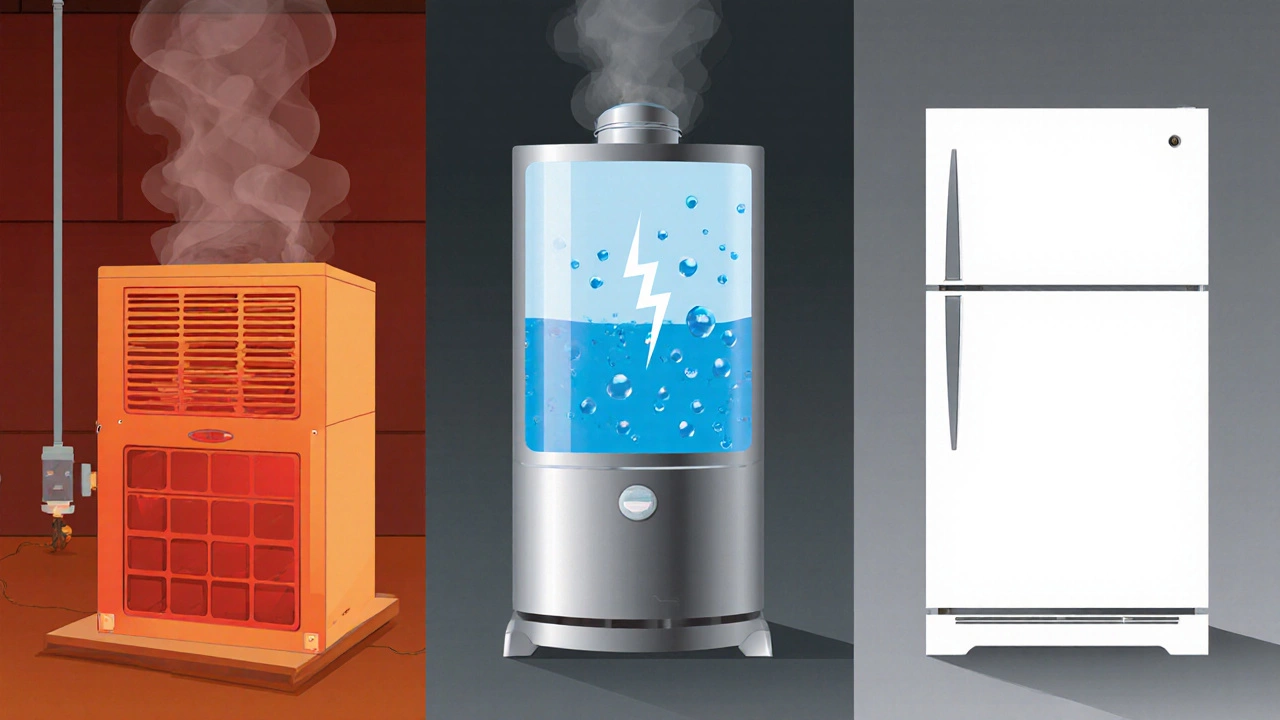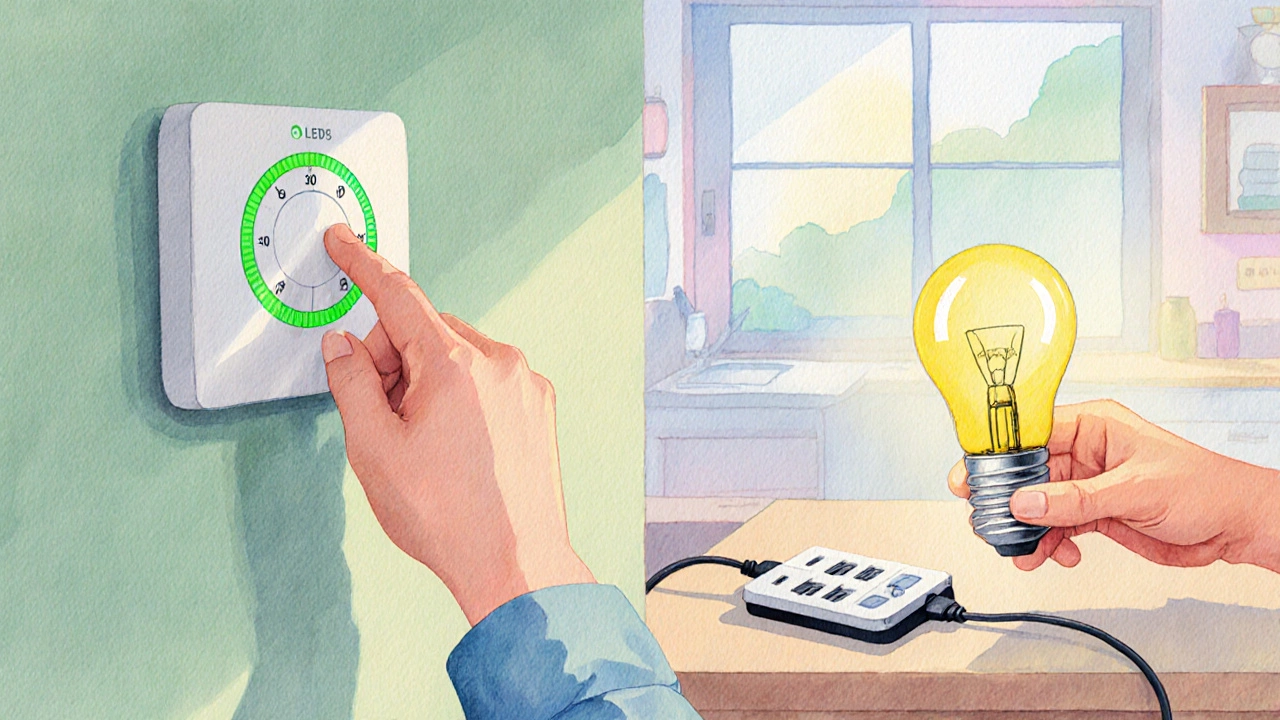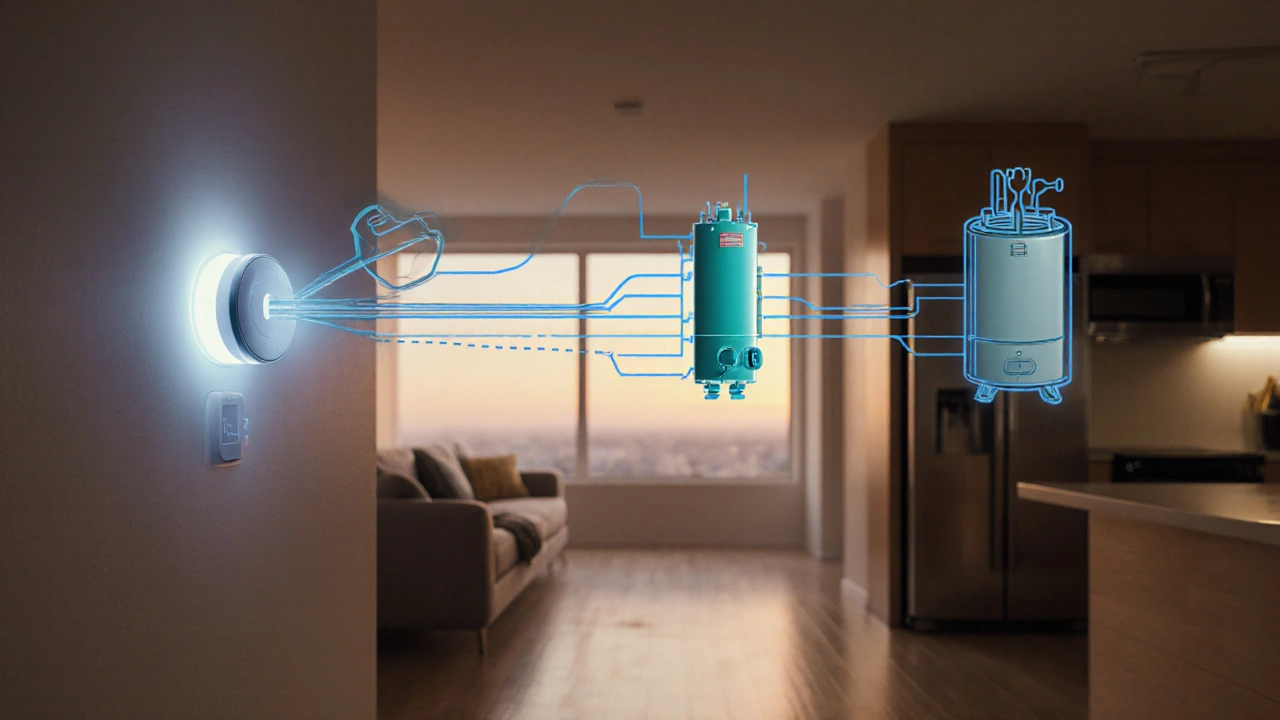Appliance Energy Cost Calculator
Calculate Your Appliance Costs
What This Costs You
For reference: HVAC systems typically use 2,500-4,000 kWh/year.
When you look at your home electricity usage, the biggest culprits aren’t always the flashy gadgets you think. Understanding which devices gulp the most power helps you cut costs and shrink your carbon footprint.
Key Takeaways
- Heating, ventilation, and air conditioning (HVAC) typically tops the list, consuming 30‑50% of a typical household’s electricity.
- Water heaters, refrigerators, and clothes dryers each account for 10‑15% of the bill.
- Lighting, TVs, cooking appliances, and standby power together make up the remaining 20‑30%.
- Simple upgrades-like a programmable thermostat or LED bulbs-can shave hundreds of kWh each year.
- Use a plug‑in energy monitor to pinpoint hidden drains and verify improvements.
What Consumes the Most Power?
Heating, ventilation, and air conditioning (HVAC) covers furnaces, heat pumps, and central AC units that regulate indoor temperature is the undisputed leader. In a moderate climate like Vancouver, an electric furnace or heat pump can draw 2,000‑4,000kWh annually, which often translates into nearly half of the total electricity bill.
Water heater stores and heats domestic hot water for showers, dishwashing, and laundry follows closely, especially if it’s electric. A 4‑50gal unit typically uses 3,000‑5,000kWh per year.
Refrigerator keeps food cold 24/7, running constantly at low power sits in the middle of the pack. Modern Energy Star models average 600‑800kWh annually, but older units can exceed 1,200kWh.
Clothes dryer uses high‑temperature heating elements to tumble wet garments is another heavy hitter. A typical electric dryer pulls 800‑1,200kWh each year, especially if you dry large loads often.
Lighting covers all indoor and outdoor light fixtures has shrunk thanks to LEDs, but still accounts for roughly 500kWh in an average home still using some incandescent or halogen bulbs.
Television includes LED, OLED, and LCD screens plus associated set‑top boxes typically consumes 150‑250kWh annually, depending on screen size and viewing habits.
Kitchen oven electric ranges and convection ovens used for baking and roasting draw about 200‑300kWh a year, with extra spikes during holiday cooking.
Standby power the "vampire" draw from devices that stay plugged in but appear off adds another 100‑200kWh, often invisible until you measure it.

How Much Do These Appliances Really Cost?
Below is a snapshot of average annual electricity consumption for a typical Canadian home. Numbers vary by house size, climate zone, and appliance age, but the table gives a solid baseline for budgeting.
| Appliance | Typical kWh/year | Estimated Cost (CAD) |
|---|---|---|
| HVAC (electric furnace/heat pump) | 2,500 - 4,000 | $300 - $480 |
| Electric Water Heater | 3,200 - 5,000 | $380 - $600 |
| Refrigerator (mid‑size) | 600 - 800 | $72 - $96 |
| Clothes Dryer | 900 - 1,200 | $108 - $144 |
| LED Lighting (all fixtures) | 300 - 500 | $36 - $60 |
| Television (65") | 180 - 250 | $22 - $30 |
| Electric Oven | 200 - 300 | $24 - $36 |
| Standby Power (multiple devices) | 120 - 180 | $14 - $22 |
Practical Ways to Trim the Biggest Drains
- Upgrade to a programmable or smart thermostat. Setting the temperature back 2°C at night can lower HVAC consumption by up to 10%.
- Insulate your water heater and set the thermostat to 120°F (49°C). A well‑insulated tank saves roughly 5‑10% of its energy draw.
- Swap to an Energy Star‑rated refrigerator. Compared with a 15‑year‑old unit, you can cut 30‑40% of the kWh demand.
- Consider a heat‑pump dryer or install a moisture sensor to stop the dryer when clothes are dry. This can shave 20‑30% off dryer usage.
- Replace every incandescent bulb with an LED. LEDs use about 80% less power and last 25× longer.
- Power‑off chargers, gaming consoles, and TV set‑top boxes when not in use. A smart power strip makes it easy.
- Use a microwave or toaster oven for small meals instead of firing up the full electric oven.
- Install motion sensors or timers for outdoor lighting to avoid lights staying on all night.

DIY Energy Audit Checklist
- Gather your most recent electricity bill and note the total kWh.
- Walk through each room and write down every plug‑in device, noting whether it’s frequently used.
- Plug a watt‑meter into high‑usage appliances (HVAC, dryer, water heater) for a week to capture real‑time consumption.
- Calculate each appliance’s annual share using the formula: (average watts × hours per day × 365) ÷ 1,000 = kWh/year.
- Rank the appliances from highest to lowest kWh; focus improvement efforts on the top three.
Frequently Asked Questions
What is the average electricity consumption for a Canadian household?
In 2025 the average Canadian home uses roughly 9,000‑11,000kWh per year, though numbers swing widely based on climate, home size, and lifestyle.
How can I find out which appliances are the biggest energy hogs in my house?
Use a plug‑in power monitor on individual devices, or install a whole‑home energy monitor that reports real‑time usage per circuit. Compare the readings to the average figures in the table above.
Will switching to LED lighting really make a noticeable difference?
Yes. Replacing a typical 60‑watt incandescent bulb with an 8‑watt LED delivers the same light output while using only 13% of the power. Across a whole house, that can shave 200‑400kWh annually.
Is a smart thermostat worth the investment?
For most households, a smart thermostat pays for itself in 1‑2years by cutting HVAC consumption 10‑15% and adding convenience features like remote control and adaptive learning.
How do I stop standby power from draining my electricity?
Unplug devices completely, use power strips with an on/off switch, or choose chargers with auto‑off circuitry. Each plug removed can save 5‑10kWh per year.
Next Steps
Start by picking one of the top three items from your audit-most likely the HVAC system, water heater, or dryer. Install a programmable thermostat or add insulation to your water tank. Track the bill for a couple of months; you should see a dip of at least 5‑10%.
Once you’ve tamed the big hitters, move on to lighting upgrades and unplugging idle electronics. Small changes add up, turning a hefty electricity bill into a more manageable number.

